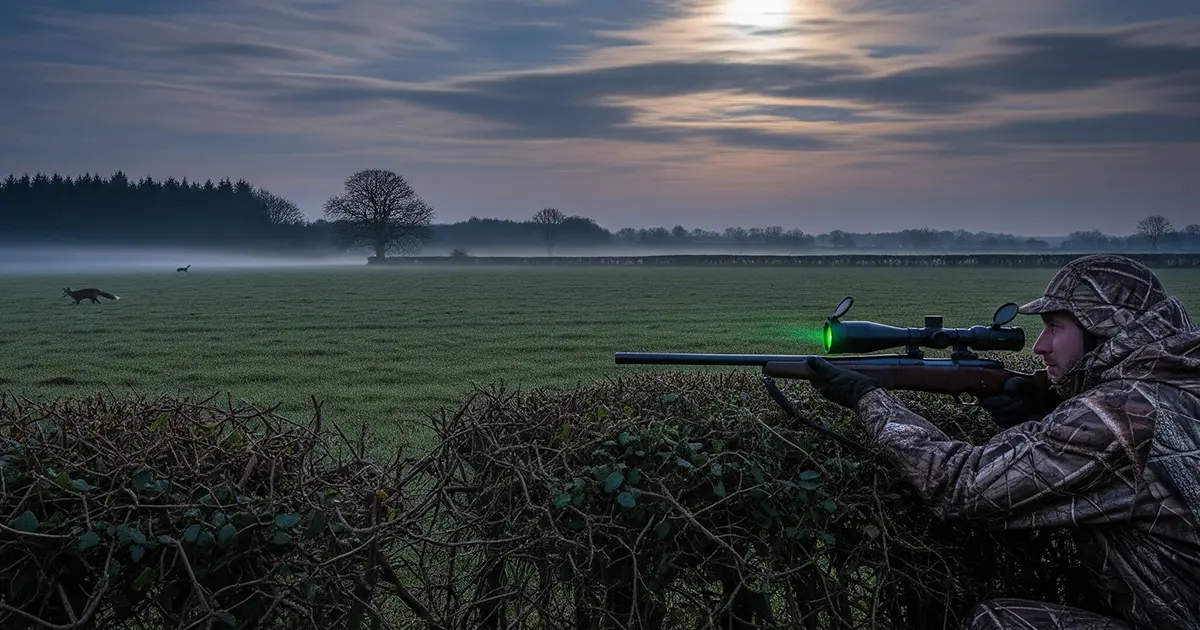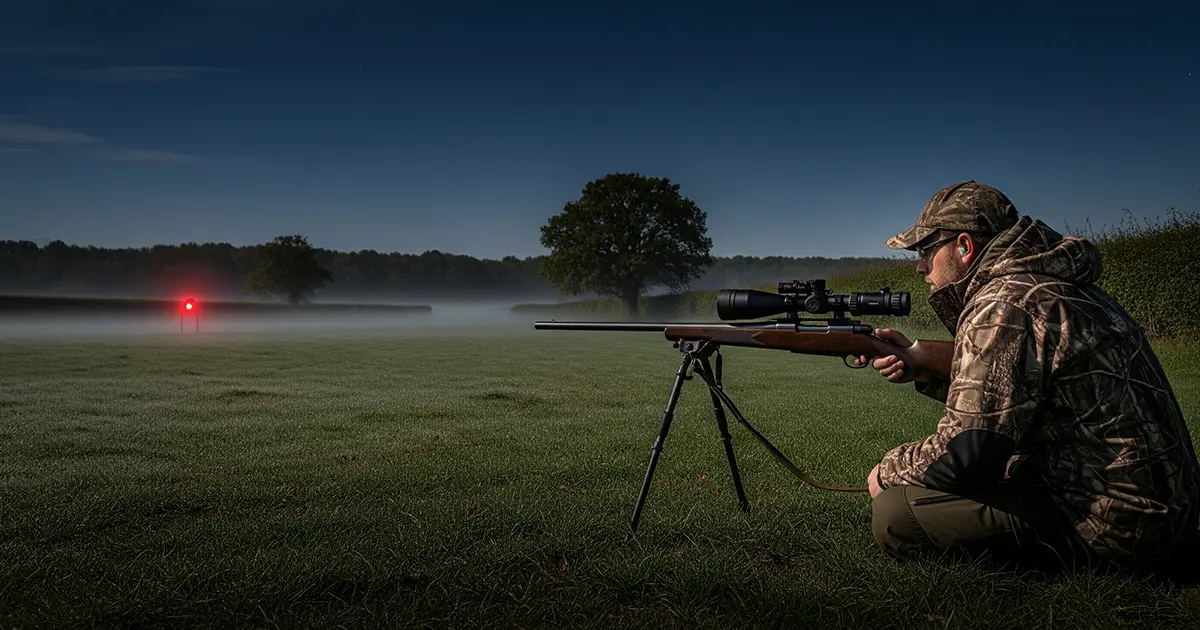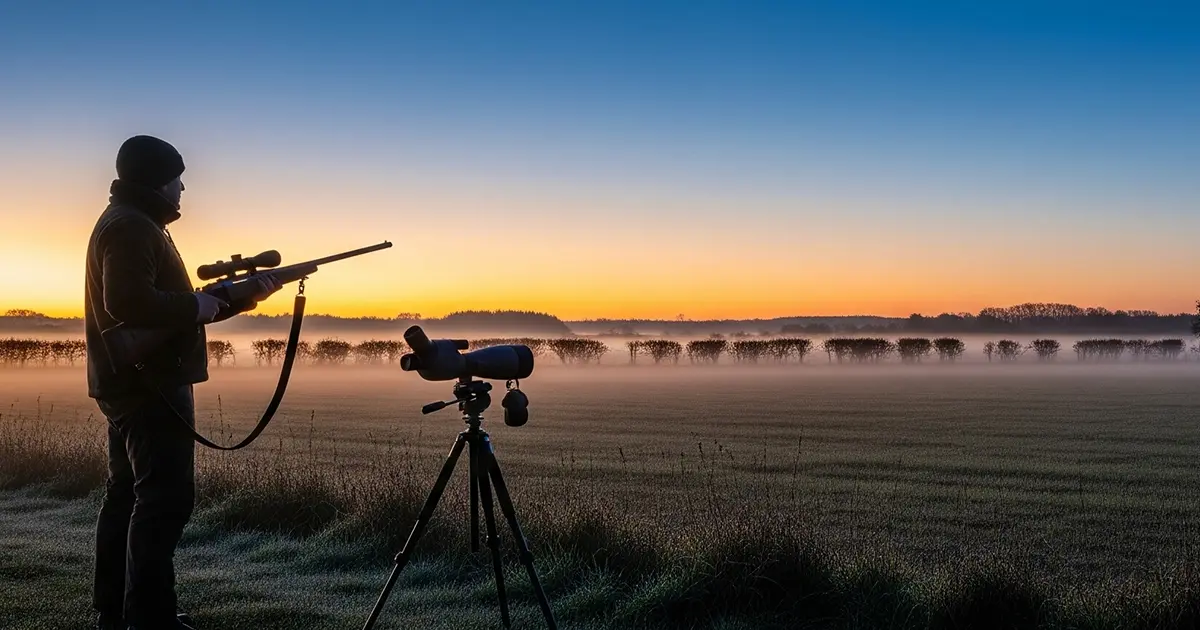Night vision opens up a world of opportunities for hunters, but with so many technologies, specifications, and price points on the market, it can be difficult to know where to begin. Choosing the wrong kit can be an expensive mistake, especially when your quarry, your environment, and the UK’s legal framework all influence what works best.
This guide explains the differences between night vision generations, how thermal compares to traditional night vision, and the practical considerations that make the difference between frustration and a tool you trust in the field.
Understanding Night Vision Generations
Night vision is not a single technology but a spectrum of developments over decades. The industry refers to these as “generations”, each with its own capabilities and price bracket.
Generation 1
The most affordable entry point, Gen 1 devices use older image intensifier tubes that work well for short-range observation under decent ambient light. They are perfectly usable for spotting rabbits in open paddocks but tend to suffer from image distortion at the edges and reduced clarity in near-total darkness.
Generation 2
A significant leap forward, Gen 2 offers better resolution, improved low-light performance, and longer detection ranges. For many UK shooters, this is the sweet spot where performance meets value, particularly for fox control or woodland stalking.
Generation 3
Top-tier light amplification, giving exceptional clarity even in overcast or moonless conditions. Gen 3 is often the choice for professional pest controllers, but comes with a price tag to match.
Digital Night Vision
A modern alternative, digital units can be used both day and night, often with built-in recording. They handle bright light better than traditional tubes, making them versatile for mixed conditions.
“The jump from Gen 1 to Gen 2 is like stepping from candlelight into a well-lit room. Once you experience that clarity in the field, it is difficult to go back.” — David Bellamy, Managing Director, The Instinctive Shooter
Thermal vs Traditional Night Vision
Many newcomers wonder whether to choose thermal imaging or light-amplifying night vision. They are not interchangeable, and understanding the difference is key.
Thermal Imaging
Detects heat signatures, allowing you to spot animals even through light cover or in total darkness. Ideal for scanning wide areas quickly. However, thermal does not provide the same level of detail for positive species identification at long range.
Traditional Night Vision
Amplifies existing light to produce a detailed, real-world image. This is better for identifying quarry species, judging antler points, or seeing obstacles clearly.
In practice, many experienced hunters use thermal for initial detection, then switch to night vision for identification and shot placement. At The Instinctive Shooter, we often recommend beginners start with one technology and gain confidence before investing in both.
UK Legal Considerations
The use of night vision for hunting in the UK is legal in most situations, but there are key restrictions and responsibilities. For example, certain species such as deer can only be hunted during legal hours, regardless of equipment. Always check the Deer Act 1991, Wildlife and Countryside Act 1981, and local bylaws.
If you are fitting night vision or thermal to a rifle, ensure it is compatible with your firearm certificate conditions. Advice from a trusted retailer can save you from an expensive purchase that cannot be legally used in your circumstances.
Common Pitfalls for Beginners
Unrealistic Expectations
Marketing images often show crisp, bright visuals that do not match real-world conditions. Fog, drizzle, and bright moonlight can all affect image quality.
Battery Drain in the Cold
Winter hunting can sap battery life quickly. Keeping spares warm in an inside pocket can prevent a night cut short.
Mounting Compatibility
Not all devices fit every rifle setup. Clip-on units can be a good starting point, as they work with existing optics and can be removed easily for daytime use.
Over-Spending Too Soon
Top-end kit is tempting, but buying a high-spec device without knowing how you will use it can be a costly mistake. Starting with a capable mid-range unit allows you to learn your preferences before upgrading.
Practical Tips for Choosing Your First Unit
- Test before you buy if possible, especially in the type of terrain and light conditions you plan to hunt in.
- Think about your main quarry. Rabbits in open fields require different detection range than foxes in mixed farmland.
- Factor in accessories such as IR illuminators for traditional night vision, spare batteries, and lens protection.
- Invest in quality mounts to ensure repeatable zero and stable performance.
Real-World Example: Fox Control in Lincolnshire
One local shooter started with a budget Gen 1 scope and quickly found it lacked range for spotting foxes across large fields. After discussing his needs at The Instinctive Shooter, he upgraded to a mid-range thermal monocular for detection, combined with a digital night vision scope for identification and shooting. The change improved his efficiency, reduced missed opportunities, and meant less time scanning through the rifle.
Final Thoughts
Night vision is one of the most effective upgrades a hunter can make, but the right choice depends on your quarry, terrain, budget, and legal responsibilities. Understanding the strengths and limitations of each technology will help you make an informed decision that suits your needs now, while allowing room for future upgrades.
At The Instinctive Shooter, we can guide you through every stage of that decision, from first-time buyer advice to advanced kit for professional pest controllers. With the right knowledge and equipment, your night-time hunts can be safer, more efficient, and far more rewarding.
Your Night Vision Questions Answered
What Is the Best Night Vision for Fox Hunting in the UK?
For fox control in mixed farmland, a mid-range thermal monocular is excellent for detection, paired with a digital night vision scope for accurate identification. This combination works well in varied light conditions and allows for quick, confident target acquisition.
Can I Use Night Vision for Deer Stalking in the UK?
Night vision is not permitted for stalking deer during hours of darkness under UK law. While it can be used for observation or other quarry, all deer shooting must take place within legal daylight hours, regardless of equipment.
Do I Need an IR Illuminator with My Night Vision Scope?
Traditional and digital night vision often benefit from an infrared illuminator, especially in very dark conditions. The right IR torch can improve image clarity and detection range without disturbing quarry.
How Far Can I See with Thermal Imaging?
Thermal detection ranges vary greatly depending on the device and conditions. A quality mid-range unit can detect heat signatures of large animals at over 1,000 metres, although identification distances will be shorter.
Will Night Vision or Thermal Work in Heavy Fog or Rain?
Thermal generally performs better in fog, drizzle, or low-contrast conditions, as it detects heat rather than relying on ambient light. Traditional night vision can lose clarity when moisture or mist scatters available light.
What Is the Lifespan of a Night Vision Device?
Tube-based night vision has a finite lifespan measured in operational hours, with Gen 2 and Gen 3 units often lasting thousands of hours if properly cared for. Digital night vision does not suffer the same degradation, although sensors can age over time.
Can I Try Night Vision Equipment Before Buying?
Yes, many specialist retailers, including The Instinctive Shooter, offer in-store demonstrations or field testing opportunities. Testing in realistic conditions helps ensure the kit matches your needs before you commit to a purchase.




